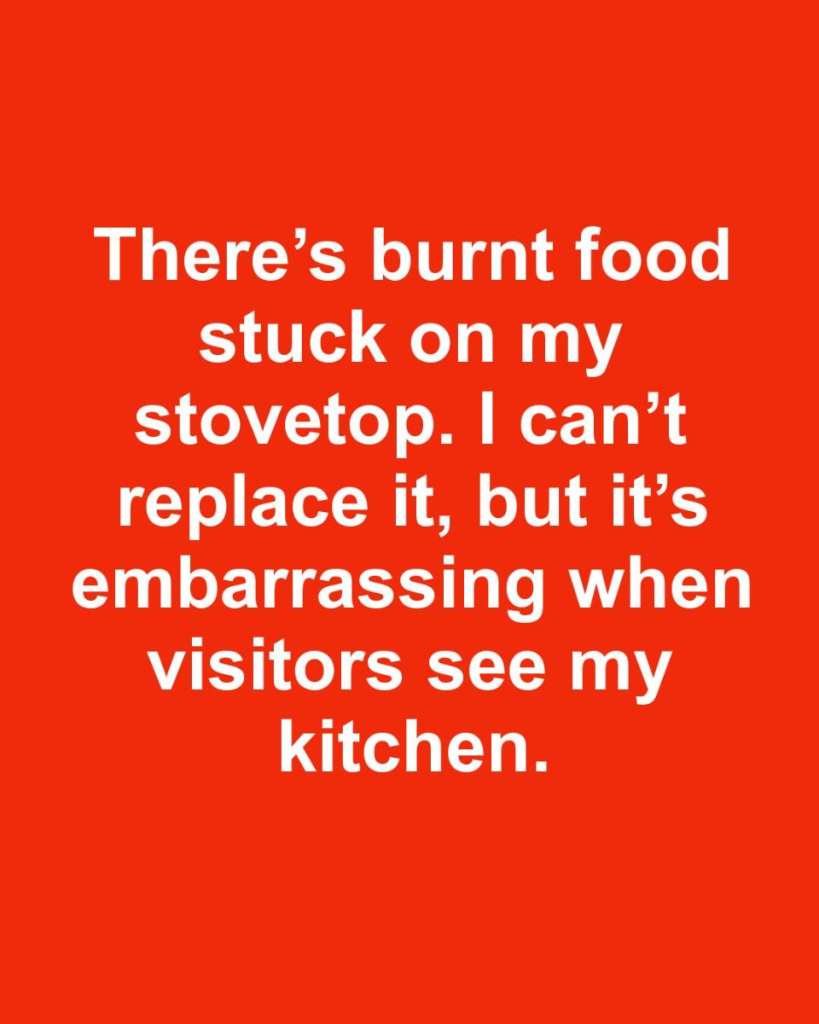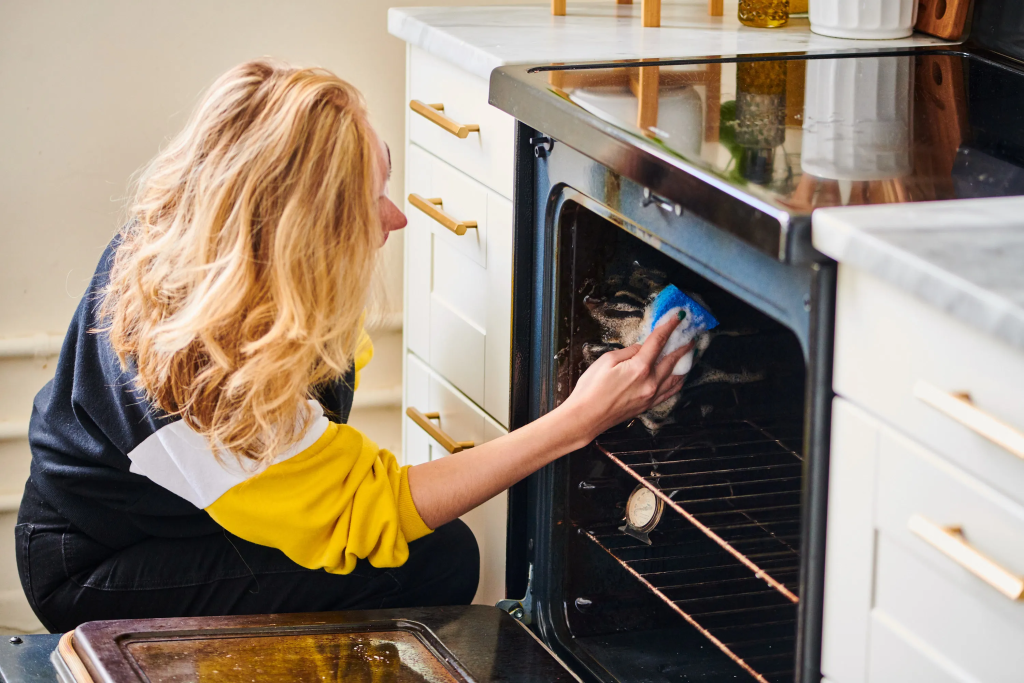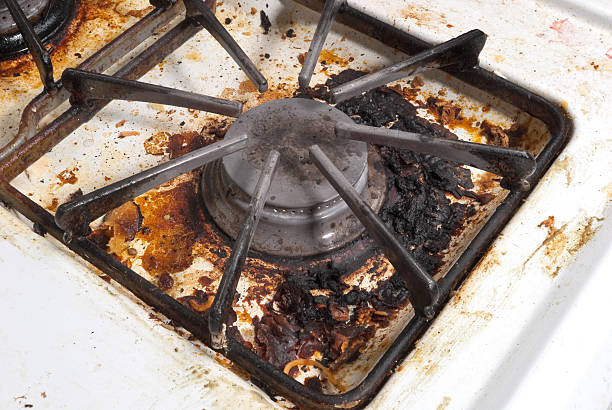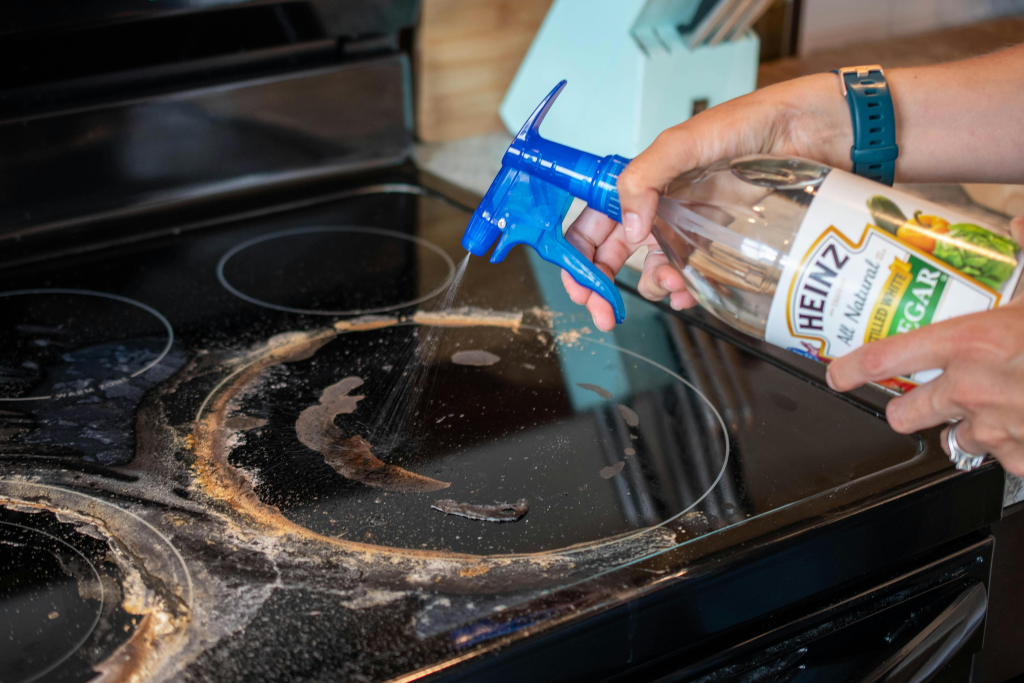A clean kitchen is a source of pride, but when life gets busy, certain chores take a backseat. One of the most common trouble spots is the stovetop, where burnt food accumulates over time. It’s frustrating, unsightly, and even embarrassing when guests drop by unexpectedly. If you’re struggling with stubborn stains and stuck-on food, don’t worry. This guide will help you understand why burnt food sticks, how to clean it effectively, and the best ways to prevent buildup in the future.
Understanding the Problem: Why Burnt Food Sticks

Burnt food doesn’t just stick randomly; it happens due to a mix of high heat and chemical reactions. When food is exposed to heat, it undergoes the Maillard reaction, which gives it that delicious browned flavor. However, when left unattended, the food continues to cook, eventually charring and becoming one with the surface.
Sugars and starches are especially problematic as they caramelize under heat, forming a sticky, hard-to-remove layer. If grease is involved, it can solidify over time, making cleanup even more difficult. Understanding these factors helps in choosing the right cleaning method for the mess at hand.
Assessing the Damage: How Bad Is It?
Before grabbing a sponge and scrubbing away, take a moment to assess the severity of the burnt food.
- Light Stains – Small splatters and residue can usually be wiped away with warm water and dish soap.
- Moderate Buildup – A layer of burnt-on food may require a baking soda paste or vinegar solution to loosen.
- Heavy Burnt Residue – Thick, blackened areas often need stronger solutions or even a scraper to break them apart.
It’s also important to check what type of stovetop you have. Glass, ceramic, and stainless steel surfaces each require different cleaning approaches to avoid scratches or damage.
Gathering Your Cleaning Supplies
To effectively clean your stovetop, you’ll need the right tools. Here’s what works best:
- Microfiber cloth or soft sponge
- Baking soda
- White vinegar
- Dish soap
- Lemon juice
- A razor scraper (for glass stovetops)
- Hydrogen peroxide (for stubborn stains)
For those who prefer commercial cleaners, make sure they are safe for your stovetop material. Some chemical-based products can damage or discolor surfaces if used incorrectly.
Step-by-Step Cleaning Guide: Removing Burnt Food

- Remove Loose Debris – Start by wiping away any loose food particles with a dry cloth or sponge.
- Apply a Baking Soda Paste – Mix baking soda with water to form a thick paste and spread it over the burnt areas. Let it sit for at least 15 minutes.
- Spray Vinegar for Extra Cleaning Power – Lightly mist white vinegar over the baking soda paste. The fizzing reaction helps break down stubborn stains.
- Scrub Gently – Using a sponge, scrub the area in circular motions. Avoid abrasive materials that could scratch your stovetop.
- Use a Razor Scraper if Needed – If the burnt food isn’t budging, carefully use a razor scraper at a 45-degree angle to lift off the residue.
- Rinse and Dry – Wipe everything down with a damp microfiber cloth, then dry to prevent streaks.
Natural Cleaning Solutions: Eco-Friendly Options
For those who prefer to keep their kitchen chemical-free, natural ingredients can be just as effective in tackling burnt food.
- Vinegar and Water – A 50/50 mix of white vinegar and water works wonders in breaking down grease and food residue.
- Lemon Juice – The acidity in lemon juice helps dissolve burnt-on stains while leaving a fresh scent behind.
- Baking Soda and Hydrogen Peroxide – This combination is perfect for deep cleaning tough stains without harsh chemicals.
These solutions are not only effective but also safe for you and the environment.
Preventative Measures: How to Keep Your Stovetop Clean

Cleaning up burnt food is a hassle, so why not prevent it from happening in the first place? A few simple habits can make all the difference:
- Clean spills immediately – Wiping up messes as soon as they happen prevents food from hardening.
- Use the right cookware – Flat-bottomed pans distribute heat evenly, reducing the risk of food burning onto the surface.
- Apply a protective layer – For glass stovetops, a small amount of vinegar or baking soda before cooking can act as a barrier.
- Invest in drip trays – If you have a gas stove, these can catch spills before they reach the burners.
With these habits, your stovetop will stay cleaner for longer, saving you time and effort in the long run.
When to Seek Professional Help
Sometimes, despite your best efforts, the mess is just too stubborn to remove. If your stovetop has deep stains, extensive damage, or if you’re worried about causing scratches, professional cleaning might be the best option.
Some appliance manufacturers also offer stovetop maintenance services. If your stove is under warranty, check for recommendations to ensure safe and effective cleaning.
Conclusion: Keeping Your Kitchen Spotless

A clean stovetop not only improves the look of your kitchen but also makes cooking more enjoyable. By understanding why burnt food sticks, using effective cleaning techniques, and adopting preventative measures, you can maintain a spotless cooking space with ease.
Cleaning up after cooking doesn’t have to be a daunting task. With the right approach, you can tackle even the toughest stains, ensuring that your kitchen remains welcoming and hygienic.


